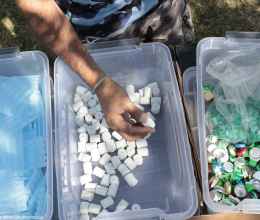The bill makes it a level 1 drug felony if a person sells, dispenses, distributes, or otherwise transfers any quantity of a controlled substance or any material, compound, mixture, or preparation that contains any amount of a schedule I or II controlled substance and the sale, dispensing, distribution, or transfer is the proximate cause of the death of another person who used or consumed the controlled substance material, compound, mixture, or preparation. It is not a violation if the violation involves distribution or transfer of the controlled substance if the distribution or transfer is done without remuneration and is for the purpose of consuming all of the controlled substance with another person or persons at a time substantially contemporaneous with the transfer and the distribution or transfer involves not more than 4 grams of a schedule I or II controlled substance; not more than 2 grams of methamphetamine, heroin, ketamine, or cathinones; or not more than one gram of fentanyl, carfentanil, benzimidazole opiate, or an analog thereof.
For a violation of unlawful distribution, manufacturing, dispensing, or sale of the material, compound, mixture, or preparation that weighs more than 225 grams and contains a schedule I or schedule II controlled substance; more than 112 grams and contains methamphetamine, heroin, ketamine, or cathinones; more than50 milligrams and contains flunitrazepam; or more than 50 grams and contains fentanyl, cargentanil, benzimidazole opiate, or an analog thereof that is not a level 1 drug felony, the bill requires, if the court sentences the defendant to incarceration, a mandatory minimum sentence of at least midpoint but no more than the maximum of the sentencing range.

